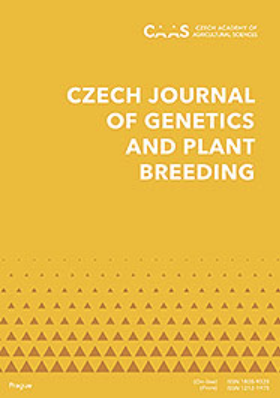以染色体为中心的作物基因组学方法:以孟德尔的豌豆植物为重点
IF 1.8
4区 农林科学
Q3 AGRONOMY
引用次数: 0
摘要
孟德尔在豌豆杂交实验后奠定了遗传学的基础。豌豆(Pisum sativum L.)及其七个形态特征作为模型系统的选择是偶然的,并促成了基本的发现。然而,他的追随者们选择了其他模式生物,他们旨在发现遗传信息的本质。这种情况一直持续到分子生物学和基因组学时代,这主要是由于豌豆植物基因组的巨大规模。然而,通过流式细胞术分选将基因组解剖为单染色体的方法的引入简化了豌豆基因组的物理定位和测序及其进化分析。豌豆染色体流分选的一个尚未探索的潜力包括基因克隆和浓缩有丝分裂染色体的分子组织分析。随着各种组学技术的进步以及各种生理和形态特征,这使得豌豆植物成为一种新的植物模型的有吸引力的候选者。本文章由计算机程序翻译,如有差异,请以英文原文为准。
Chromosome-centric approaches in crop genomics: Focus on Mendel’s pea plant
Gregor Mendel laid foundations of genetics after his experiments in pea plant hybridization. The choice of pea (Pisum sativum L.) and its seven morphological characters as a model system was fortuitous and enabled the fundamental discoveries. Nevertheless, other model organisms were chosen by his followers who aimed at discovering the nature of hereditary information. This remained so until the era of molecular biology and genomics, largely due to the huge size of the pea plant genome. However, the introduction of methods for dissecting the genome to single chromosomes by flow cytometric sorting simplified physical mapping and sequencing the pea genome and the analysis of its evolution. An unexplored potential of chromosome flow sorting in pea includes gene cloning and also the analysis of the molecular organization of condensed mitotic chromosomes. In line with the advances in various omics techniques and a variety of physiological and morphological characters, this makes the pea plant an attractive candidate for a new plant model.
求助全文
通过发布文献求助,成功后即可免费获取论文全文。
去求助
来源期刊

Czech Journal of Genetics and Plant Breeding
Agricultural and Biological Sciences-Plant Science
CiteScore
2.20
自引率
0.00%
发文量
25
审稿时长
>12 weeks
期刊介绍:
Original scientific papers, critical reviews articles and short communications from the field of theoretical and applied plant genetics, plant biotechnology and plant breeding. Papers are published in English.
 求助内容:
求助内容: 应助结果提醒方式:
应助结果提醒方式:


